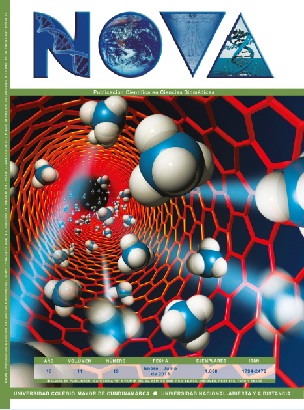NOVA por http://www.unicolmayor.edu.co/publicaciones/index.php/nova se distribuye bajo una licencia Reconocimiento No Comercial- Compartir igual
Así mismo, los autores mantienen sus derechos de propiedad intelectual sobre los artículos,
Declaración de privacidad.
Los nombres y las direcciones de correo electrónico introducidos en esta revista se usarán exclusivamente para los fines establecidos en ella y no se proporcionarán a terceros o para su uso con otros fines.
Astaxanthin Production in Haematococcus pluvialis under different stress conditions
Microalgae are a source of a large number of bioactive compounds of industrial importance, such as carotenoids used as natural colorants in food and feed, as well as in pharmaceuticals, cosmetics and aquaculture. They also have been studied as effective compounds for the prevention of different diseases due to their antioxidant, immunoregulatory, anti-inflammatory and anticarcinogenic properties.
In biotechnology applications astaxanthin is the most important ketocarotenoide. Currently most astaxanthin is produced by chemical synthesis and sold at U.S. $ 2500/kg. The high price and increasing demand of this compound in different industries, especially of natural origin creates an interest in the astaxanthin production from microalgae as Haematococcus pluvialis that accumulate significant amounts (more than 4%/g dry weight) and better quality what is obtained from sources such as yeast and plants.
The pigment accumulation in H. pluvialis occurs during the transformation of microalgae from the vegetative state (green phase) to aplanospora (red phase) when growth ends in the stationary phase. The types of stress that induce astaxanthin accumulation are temperature, light intensity, cycles of light / dark, nutrient concentration, pH, reactive oxygen species, salts and presence of metabolic processes inhibitors at different levels.
Is important to take in account that this microalgae is hard to grow and obtain the pigment in amounts of interest could be complicated due to complex cell cycle. Similarly, a better understanding of the molecular basis of the relationship, stress-inducing conditions, astaxanthin accumulation in H. pluvialis, might be helpful for increasing productivity of astaxanthin.









